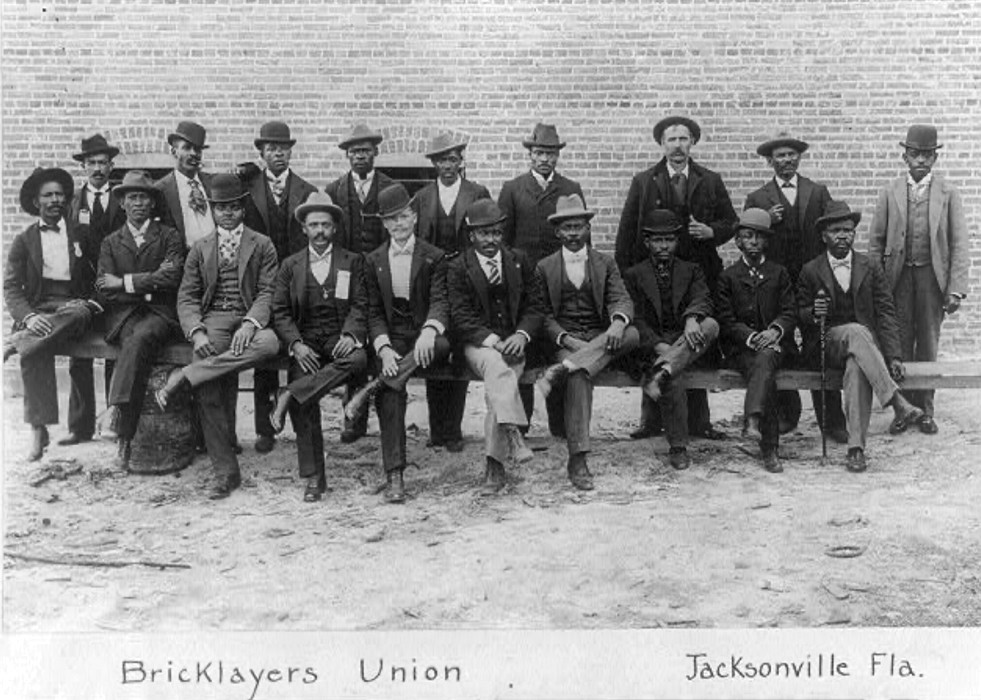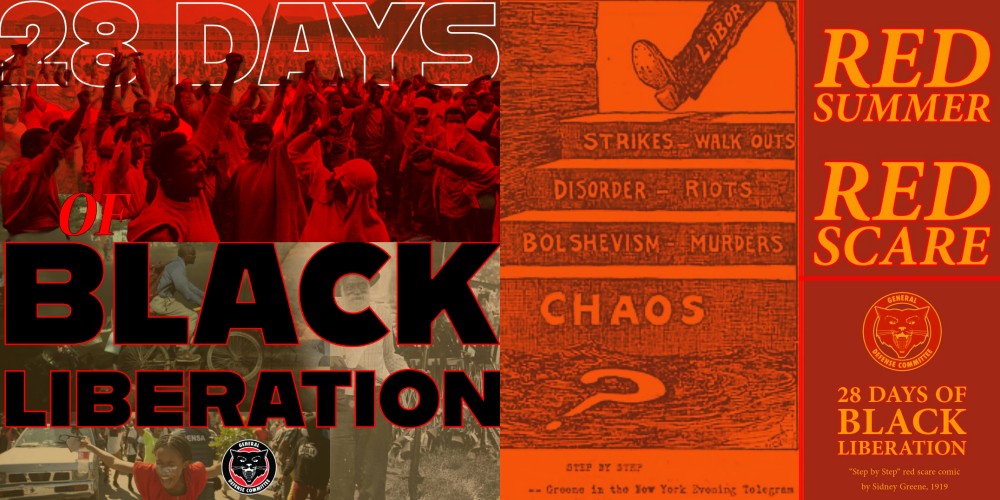28 Days of Black Liberation 2025 series
The Red Summer took place during of the First Red Scare, a time of widespread fear of left-wing movements due partly to real events like the Russian Revolution of 1917, the German Revolution of 1918, anarchist bombings of politicians and bosses, and successful strikes in Seattle and Boston during this time.
Black vets returning from WWI brought another fear – after being told to fight for US democracy abroad, they were treated unfairly and given the worst jobs. Once home, Black vets hoped to be treated better because of their service but returned to the same racism they had left. Many vets came to a new understanding of the hypocrisy of US democracy and society and were energized to fight racial inequality.
Those in power were scared that a combination of the strong and radical labor movement and an energized Black civil rights movement could start a revolution of US society and spread those fears in the press.

This fear was not unfounded. While most trade unions discriminated against Black workers, large revolutionary groups like the IWW and CPUSA fought against racism based on the idea that the separation of Black and white workers was put in place to pit workers against each other and make it hard to unite against capitalism. Many Black civil rights figures and magazines of the time agreed with this and wrote and spoke in favor Black and white labor joining forces against racism and capitalism. Black workers formed unions and other radical groups like the African Blood Brotherhood, an anti-capitalist and anti-colonial group.
In response to this radical activity, the Attorney General carried out a series of raids against foreign-born people he accused of being radicals. Government agencies carried out illegal searches, arrests, and deportations. While white radicals were harassed through the courts and government, Black revolutionaries were subjected to brutal extrajudicial punishment as well.
The Elaine Massacre, which took place during the Red Summer, was partly in response to Black labor organizing against white bosses in the area. After the Red Summer, politicians and the press blamed the violence on “Black insurrection” instead of white mobs.
During the month of February GDC honors the legacy of the Black Liberation Struggle. Our program – 28 Days of Black Liberation – seeks to highlight the history, take inspiration, and draw lessons from the Black freedom struggle. The GDC sees the Black Proletariat as the vanguard of the class struggle in the United States – from early rebellions led by enslaved African people to the George Floyd Rebellion. The 28 Days of Black Liberation is a chance to reflect on this history of resistance and continue the revolutionary struggle against white supremacy, capitalism, and imperialism. Each week we will focus on one event/movement that we think is critical. We will also have events each week to allow for collective discussion and deepening our understanding and revolutionary commitment.

